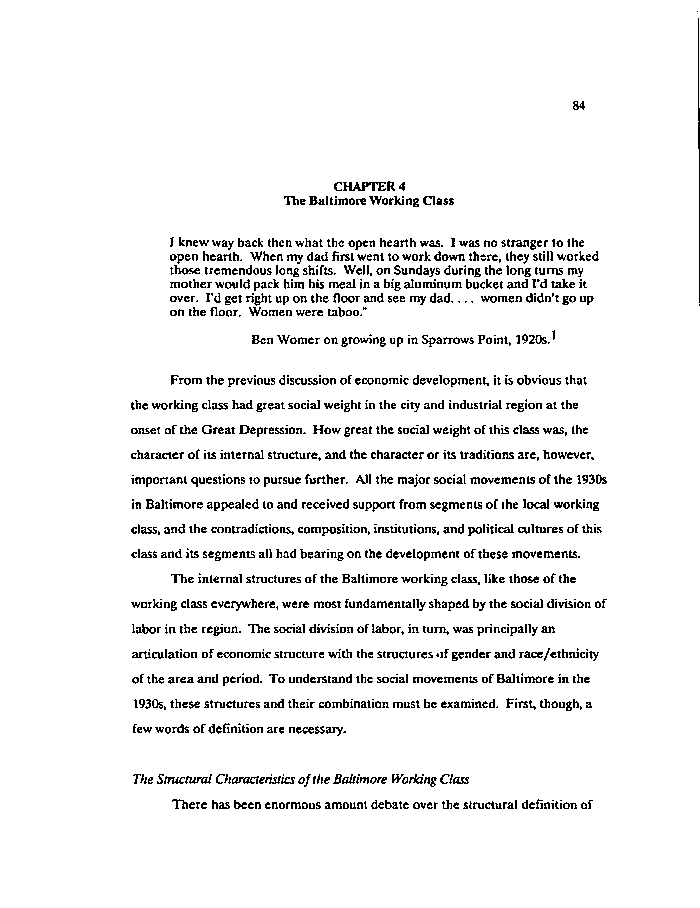|
84
CHAPTER 4
The Baltimore Working Class
I knew way back then what the open hearth was. I was no stranger to the
open hearth. When my dad first went to work down there, they still worked
those tremendous long shifts. Well, on Sundays during the long turns my
mother would pack him his meal in a big aluminum bucket and I'd take it
over. I'd get right up on the floor and see my dad.... women didn't go up
on the floor. Women were taboo."
Ben Womer on growing up in Sparrows Point, 1920s.
From the previous discussion of economic development, it is obvious that
the working class had great social weight in the city and industrial region at the
onset of the Great Depression. How great the social weight of this class was, the
character of its internal structure, and the character or its traditions are, however,
important questions to pursue further. All the major social movements of the 1930s
in Baltimore appealed to and received support from segments of the local working
class, and the contradictions, composition, institutions, and political cultures of this
class and its segments all had bearing on the development of these movements.
The internal structures of the Baltimore working class, like those of the
working class everywhere, were most fundamentally shaped by the social division of
labor in the region. The social division of labor, in turn, was principally an
articulation of economic structure with the structures of gender and race/ethnicity
of the area and period. To understand the social movements of Baltimore in the
1930s, these structures and their combination must be examined. First, though, a
few words of definition are necessary.
The Structural Characteristics of the Baltimore Working Class
There has been enormous amount debate over the structural definition of
|

